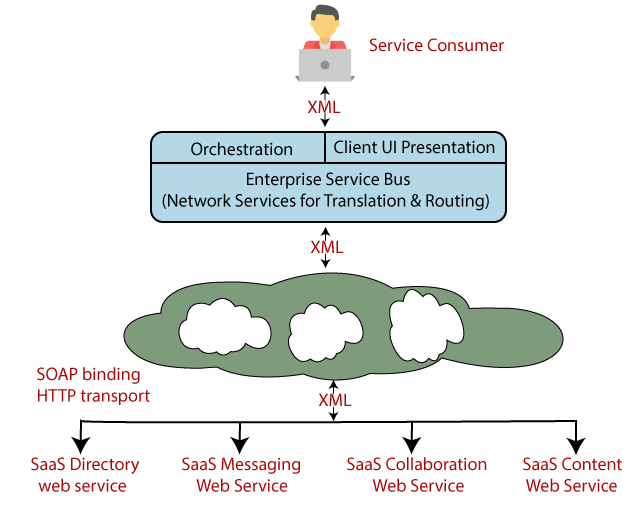Cloud Service Models
There are various types of cloud service model
- Software as a service (SaaS)
- Infrastructure as a service (IaaS)
- Platform as a service (PaaS)
- Identity as a service (IDaaS)
- Network as a service (NaaS)
Let’s discuss each service model in detail.
- Software-as-a-service (SaaS):- SaaS is also called “on-demand-software.” In SaaS, the consumer uses an application, but does not control the operating system, hardware, or network infrastructure on which it is running. In SaaS software and related data are centrally hosted on the cloud server. SaaS can be accessed by users using a thin client through a web browser.
Example
- Cordys
- Zynga
- Dropbox
- Animoto

Advantages of SaaS
- SaaS is easy to buy:-The cost of SaaS is based on the monthly or annual fee. SaaS permits the organization to access business functionality at a low price, which is less than the licensed application.
- No need for more hardware for SaaS: -For SaaS, there is no need for more hardware because the software is hosted remotely, so no need to invest in additional hardware.
- Low maintenance required for SaaS: - SaaS requires low maintenance because it removes the necessity of installation, set-up, and general daily upkeep and maintenance for the organization. The cost of the initial set-up is slightly less than the enterprise software.
- No special software or hardware version required:-The significant advantage of SaaS is that all users have the same version of the software and can access it via the web browser.
Disadvantages of SaaS
- Security:-Security is the main issue in SaaS. It does not provide security of the data.
- Total dependency:-SaaS is dependent on the internet. Without the internet it cannot be accessed.
- Switching between SaaS vendors is difficult:- Switching is difficult in SaaS, and due to this, the task of transferring the huge data files over the internet is slow.